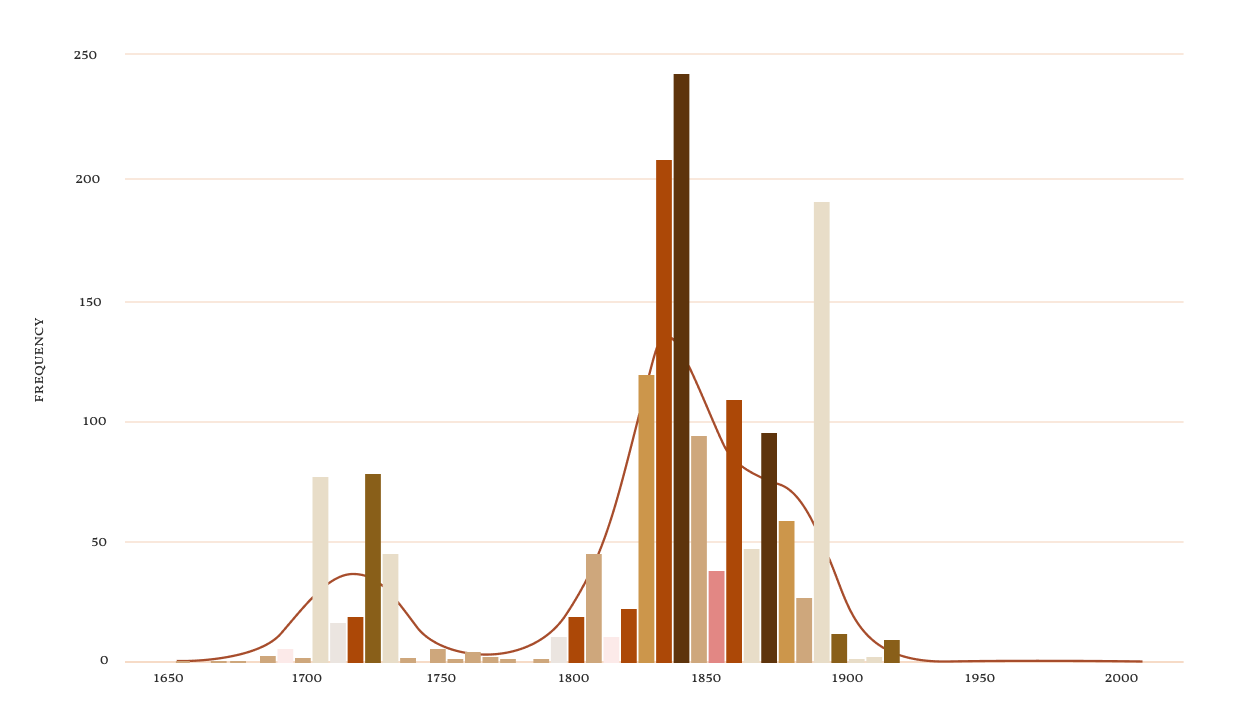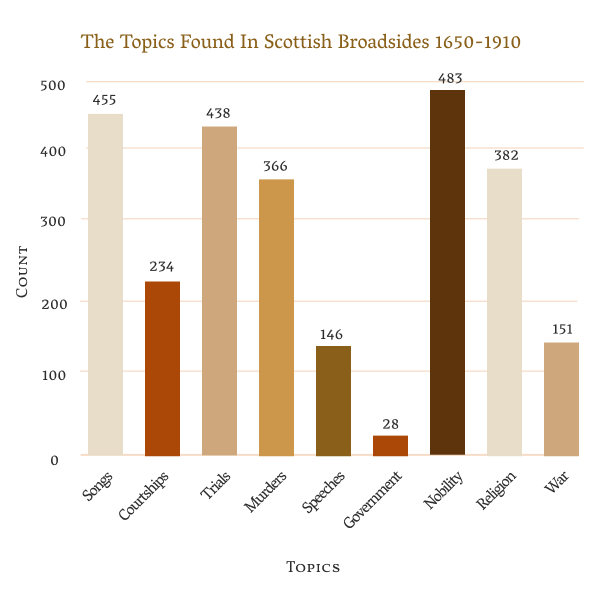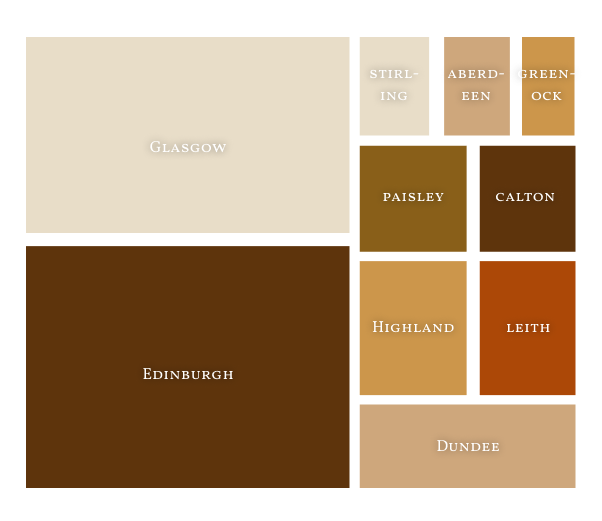About Scottish Broadsides
Broadsides were single sided newspaper sheets posted in public places and sold by street vendors. They were and early version of the tabloid press. Broadsides first printed official notices and royal proclamations but later, the Broadsides became an early form of popular culture, by printing songs, gallows speeches and sensationalised crime.
The Life of a Broadside
In the following data comic, see the life of the Broadsides from 1650 to 1910. See how Broadsides' topics changed from official notices and royal proclamations, ballads, stories of execution and murder, to sensationalized novels. Finally, Broadsides evolved into our current newspaper.






When Were They Reading It?

What Were They Reading?

Where Were They Reading it?
